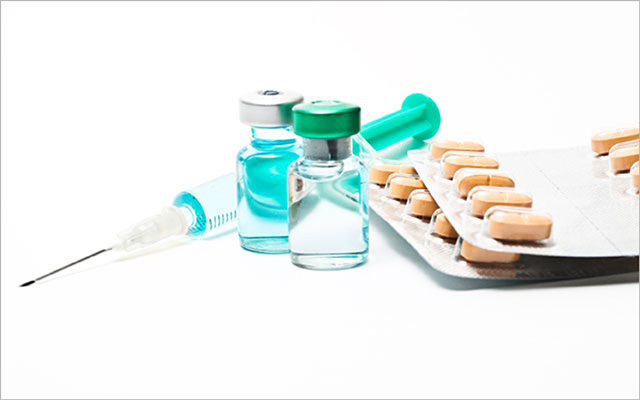I have for many years now stubbornly ignored the pleas of various physicians who, after viewing lab reports chronicling the amount of cholesterol populating my aging arteries, attempted to persuade me of the salutary effects of a statin regimen. It’s an extremely popular course of heart-attack prevention among my geezer counterparts, but I’ve chosen to be an outlier due to my general disdain for pharmaceutical remedies.
I’m not alone among statin skeptics. A 2019 American Heart Association survey reported that about four in 10 of those polled either declined to take the drug or discontinued its use due to concerns about potential side effects and murky cost-benefit analyses.
Recent developments, however, suggest that statin-phobics like me may want to revisit our opposition to the drugs. As Jane Brody puts it in the New York Times, “Cholesterol-lowering statin drugs, already one of the most popular medications worldwide, may become even more widely used as evidence grows of their safety and value to the elderly and their potential benefits beyond the heart and blood vessels.”
While Brody admits that statins remain a dicey approach for anyone over the age of 75, for whom too little cholesterol may be more dangerous than too much, she cites three recent large studies showing that older adults using the drugs were 25 to 34 percent less likely to die during a follow-up period than those who eschewed the medication.
And then there’s this: A batch of new research suggests that lipophilic statins (atorvastatin, simvastatin, lovastatin, and fluvastatin) may also provide cancer-fighting benefits. In one study, early-stage breast-cancer survivors who started a statin regimen within three years of their diagnosis were less likely than statin-averse patients to experience a recurrence of the disease in five years. Another study reported a 40 percent drop in deaths from ovarian cancer among patients taking a statin either before or after their diagnosis.
And, as if to shove the whole statin decision more directly into the current zeitgeist, University of California–San Diego scientists last week released the results of research suggesting that the drug may not only reduce the risk of contracting COVID-19 but may even contribute to a quicker recovery.
“We found that statins are not only safe but potentially protective against a severe COVID-19 infection,” lead study author Lori Daniels, MD, said in a statement. “Statins specifically may inhibit SARS-CoV-2 infection through its known anti-inflammatory effects and binding capabilities as that could potentially stop progression of the virus.”
The virus apparently needs cholesterol in order to invade cells; sap the cell membranes from those molecules and you lock the bug out. To test their theory, Daniels and her team analyzed medical records of 170 COVID-19 patients and found those using statins were about half as likely as statin-free patients to develop serious symptoms. They also tended to recover faster.
“It’s not unlike cancer immunotherapy,” explains Tariq Rana, PhD, who led a companion study that examined the mechanics of the statin-COVID interaction. “The idea that sometimes instead of attacking a tumor directly, it’s better to arm a patient’s immune system to do a better job of clearing away tumors on its own.”
All of which sounds pretty compelling until you get to the caveats: None of these breakthrough studies reflects randomized, controlled clinical research. And none of them mentions the dangers the elderly face when mixing statins with other medications — especially heart-rhythm drugs. Even Brody acknowledges the risks, citing a blog post last fall by Brigham and Women’s Hospital cardiovascular specialist Dara Lee Lewis, MD. “The paradox that we face is that as our patients age, they are at increased risk for heart attacks and strokes,” Lewis notes, “and yet they also become more sensitive to medication side effects, so it is a tricky balance.”
I find myself more interested in the notion, raised last year by University of Colorado at Boulder researchers, that the key to a healthy cardiovascular system may not reside in our blood vessels at all; it may have more to do with the bacterial mix in our guts. Working with lab mice, lead study author Doug Seals, PhD, and his team found that the gut microbiota of older mice produced an excess of TMAO (trimethylamine N-oxide) molecules, which have been linked in earlier studies to an increased risk of cardiovascular troubles.
“We have long known that oxidative stress and inflammation are involved in making arteries unhealthy over time, but we didn’t know why arteries begin to get inflamed and stressed. Something is triggering this,” Seals explained. “We now suspect that, with age, the gut microbiota begins producing toxic molecules, including TMAO, which get into the blood stream, cause inflammation and oxidative stress and damage tissue.”
The gut also happens to harbor most of the body’s immune system, so it’s at least plausible that tending to its microbial mix with good nutrition, including a variety of probiotic-rich foods and prebiotic fiber, may also help us fend off the virus — while we continue to mask up and keep our distance in public.
Don’t get me wrong: I’m happy to hear that statins may be more versatile and valuable than previously thought. And I hope that more extensive research reinforces the results Brody and others are currently trumpeting. But, as I often tell my less Pharma-phobic friends, we all get to make the choices that deliver the most peace of mind. That means I’ll continue to avoid the pharmacy, stay active, eat as sensibly as possible, stay calm, and enjoy whatever time I’ve got left.
And maybe eat more yogurt.




This Post Has One Comment
There is no plausible reason to believe that statins make a user a better driver. And yet, in a 2009 study, statin users were 25% less likely to have automobile accidents than non users. See “Statin adherence and risk of accidents: a cautionary tale”
Colin R Dormuth (Google it). This is a very good data point by which to assess the healthy user bias when comparing statin users to persons who eschew statins. Any of the alleged benefits of statins based on comparisons of users to non-users, if showing a 25% or so benefit (hazard reduction), are utterly confounded by the healthy user effect and should be ignored. It is just the statin PR machine at work. In my view, these sorts of associations need to show a massive benefit – 50% or 75% hazard reduction or more – in order to even start to suspect that causation may be present.